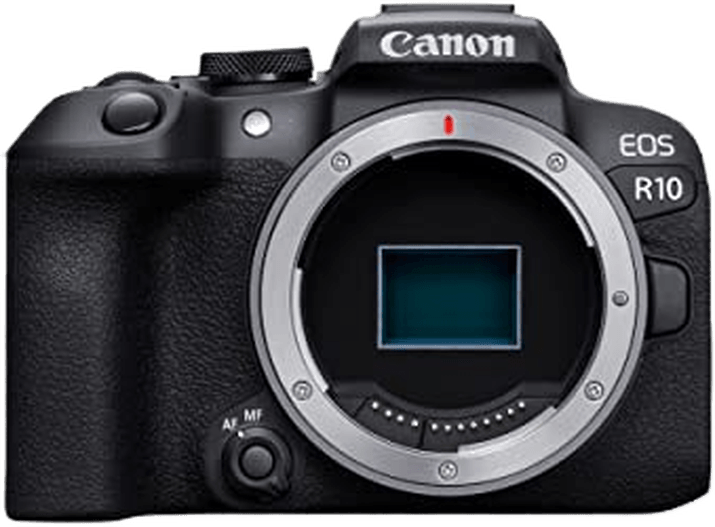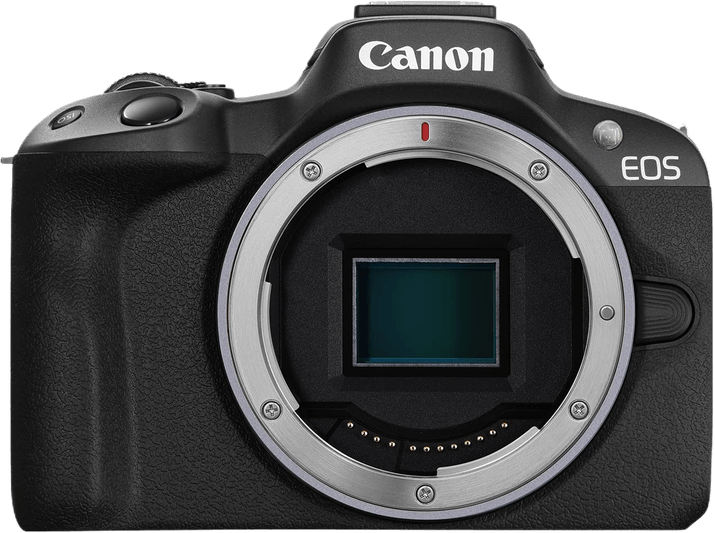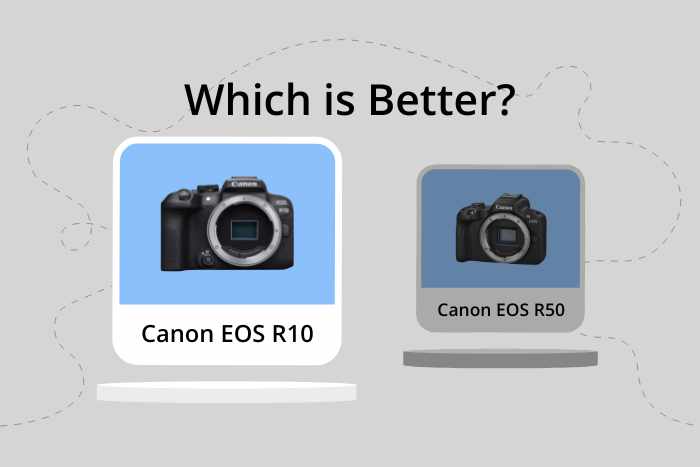Canon EOS R10 vs EOS R50 Comparison
Canon EOS R10

Canon EOS R50

The Canon EOS R50 narrowly wins with a score of 70/100, while the Canon EOS R10 follows closely behind at 69/100. Both cameras are mirrorless and were released in 2022 and 2023, respectively. They share similar specifications, with the R50 being slightly smaller and lighter, measuring 116 x 86 x 69mm and weighing 375g, compared to the R10’s 123 x 88 x 83mm and 426g.
The R50’s advantage lies in its lower launch price of $679, making it more affordable than the R10, which debuted at $980. On the other hand, the R10’s larger size and weight could suggest a more robust build, potentially offering better durability.
Taking these factors into account, the Canon EOS R50 is a more budget-friendly option, while the Canon EOS R10 might be preferred by those seeking a sturdier camera. Both cameras have their merits, and the choice ultimately depends on the user’s priorities and preferences.
Canon EOS R10 vs EOS R50 Overview and Optics
The Canon EOS R50 emerges as the winner in the optics comparison with a score of 73/100, while the Canon EOS R10 scores 71/100. Both cameras share several common specifications, including 24-megapixel resolution, CMOS sensor type, Digic X processor, APS-C sensor size, Canon RF lens mount, and absence of image stabilization.
The EOS R50 outperforms the EOS R10 in some aspects. Despite having the same megapixel count, the R50 has a higher DXOMARK score for the sensor at 94, compared to the R10’s 97. This indicates that the R50’s sensor performs better in terms of color depth, dynamic range, and low-light performance. However, the R10 has a faster shooting speed of 15 frames per second, compared to the R50’s 12 frames per second. This makes the R10 more suitable for capturing fast-moving subjects and action shots.
On the other hand, the EOS R10 has its advantages. Its faster shooting speed may appeal to photographers who prioritize capturing fast-paced action. However, the difference in shooting speed is not substantial enough to outweigh the R50’s superior sensor performance.
In the optics comparison, the Canon EOS R50 stands out as the better camera due to its higher sensor performance, which results in better image quality. The EOS R10 offers a faster shooting speed but falls short in other aspects. Therefore, the EOS R50 is the recommended choice for photographers seeking a camera with better optics performance.
Canon EOS R10 vs EOS R50 Video Performance
The Canon EOS R10 and the Canon EOS R50 both have a video score of 91/100, indicating that these cameras have comparable video capabilities. They share several common specifications, such as a maximum video resolution of 4K and video dimensions of 3840 x 2160. Both cameras also offer a maximum video frame rate of 120fps and have built-in time-lapse functionality.
Since both cameras have the same video score, it is difficult to determine a clear winner based on their specifications. However, there may be individual aspects of each camera that make them more suitable for specific users or situations. For instance, the Canon EOS R10 may have features that cater to vloggers or content creators, while the Canon EOS R50 might be more suitable for filmmakers or professionals.
It is essential to consider other factors, such as ergonomics, usability, and additional features, when comparing these two cameras. The Canon EOS R10 may have a more user-friendly interface or better autofocus capabilities, while the Canon EOS R50 might offer more customization options or better color grading options. These factors can influence the overall user experience and ultimately determine which camera is better for a particular user.
After examining the video capabilities of both the Canon EOS R10 and the Canon EOS R50, it is evident that they are evenly matched in terms of specifications. Users should consider their specific needs and preferences when selecting a camera, as the better choice will ultimately depend on individual requirements and the intended use of the camera.
Canon EOS R10 vs EOS R50 Features and Benefits
The Canon EOS R50 takes the lead with a feature score of 72/100, while the Canon EOS R10 trails closely behind with a score of 70/100. Both cameras share several common specifications, making them strong contenders in the market.
Both the EOS R10 and R50 have 3-inch screens with touch capabilities and flip screen functionality. This similarity allows users to enjoy the same level of convenience and ease when composing shots and navigating menus. Additionally, both cameras are equipped with WIFI and Bluetooth connectivity, enabling seamless sharing of images and remote control of the camera.
However, the EOS R50 surpasses the R10 in screen resolution, boasting 1,620,000 dots compared to the R10’s 1,040,000 dots. This higher resolution provides a clearer and more detailed display, enhancing the user’s experience when reviewing images and videos.
On the other hand, the EOS R10 does not have any significant advantages over the EOS R50 in terms of features. Both cameras lack GPS functionality, which could have been a potential advantage for the R10.
In comparing the features of the Canon EOS R10 and R50, it is evident that the R50 holds a slight edge over the R10, primarily due to its higher screen resolution. While both cameras share many similarities, the R50’s improved display ultimately sets it apart from the R10. However, the R10 remains a viable option for those seeking a camera with comparable features and a slightly lower price point.
Canon EOS R10 vs EOS R50 Storage and Battery
The Canon EOS R10 outperforms the Canon EOS R50 in storage and battery, scoring 40 out of 100, while the R50 scores 35. Both cameras share some common specifications. They each have one memory card slot and support USB charging. Additionally, both use the LP-E17 battery type.
The R10 has a better battery life, providing 450 shots compared to the R50’s 370 shots. This advantage makes the R10 a more reliable option for extended shooting sessions. However, the R50 offers compatibility with both UHS-I and UHS-II SD memory cards, while the R10 is only compatible with UHS-I cards. This aspect gives the R50 an edge in terms of faster data transfer rates and potentially larger storage capacities.
Despite the R50’s advantage in memory card compatibility, the R10’s superior battery life makes it a more practical choice for photographers who prioritize longer shooting times. The R50’s compatibility with faster memory cards may appeal to those who value faster data transfer speeds, but it is not enough to outweigh the R10’s overall advantage in storage and battery performance.
Canon EOS R10 vs EOS R50 Alternatives
Here are some related popular camera comparisons to check for inspiration:

